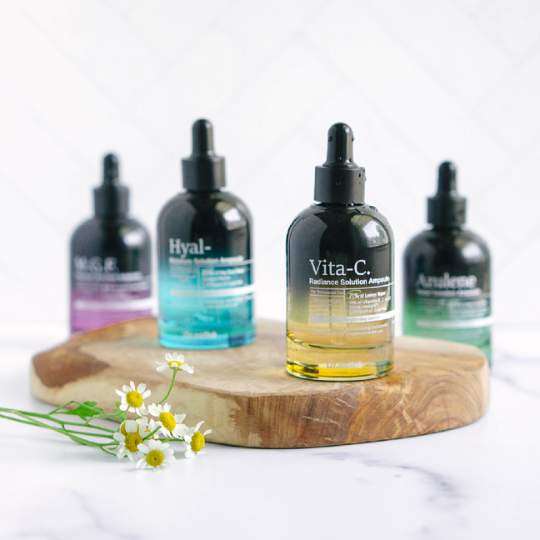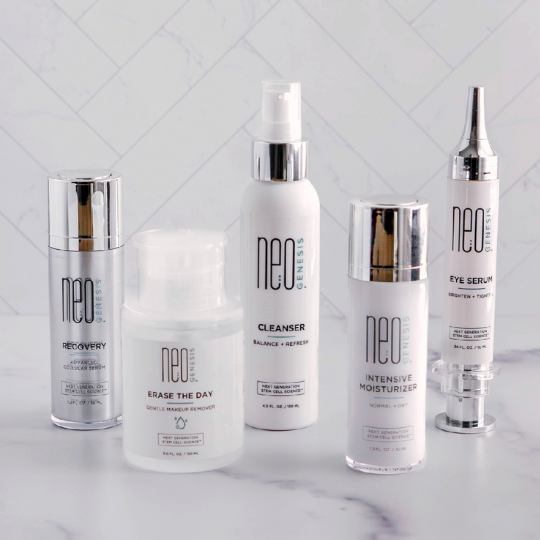It’s not Thanksgiving, but my turkey still made an appearance at the dinner table… my turkey neck, that is! Sagging skin under the chin and along the jowls, often referred to as ‘turkey neck’ or my personal favorite, ‘the waddle,’ is an unfortunate but often unavoidable concern. From weakening muscles and wrinkling skin to the weight of gravity, many things can cause a turkey neck to develop.
Some people, me included, will try anything to get rid of a turkey neck for good—even go under the knife to reclaim a chiseled jawline! But after 23 years as a licensed esthetician, I’ve worked on enough turkey necks to know that surgery is not always the way to go.
Keep reading to discover the most effective approaches to fixing a turkey neck, including my preferred nonsurgical treatments!
Why Do People Get a “Turkey” Neck?
‘Turkey neck’ is something most people associate with age, which is partially true. As your body ages, it produces less natural collagen and loses elasticity. Without collagen to maintain its structure, the skin around your jaw and neck can begin to sag. Age also weakens the platysma and sternocleidomastoid muscles that support your neck, which can alter its appearance over time.

However, it’s not just the aging process that causes the sagging skin and jowls we call turkey neck. Even in younger people, elements like sun damage and smoking can decrease skin elasticity. Genetic factors—like if a parent also had a turkey neck—poor diet and weight gain can cause turkey neck. Many are surprised that an accumulation of lymph fluid can also contribute to neck bloating. And let's not forget tech neck! All that staring down at devices wreaks havoc on lymph drainage of the neck.
Surgery for a Turkey Neck: Yay or Nay?
If you feel your turkey neck move every time you turn your head, chances are, you’ve looked into surgery for sagging skin along the neck and jowls.
Several facial rejuvenation options for turkey neck, primarily cosmetic surgery like facelifts (rhytidectomy) and neck lifts (platysmaplasty), tighten weak facial and neck muscles and remove excess skin for a more toned appearance. Another facial rejuvenation option for turkey neck is a fat transfer, which pulls fat cells from one part of the body (like liposuction) and injects them into the neck region to re-plump the skin. However, most need fat removal from the neck. Micro liposuction helps here.
Though both options will eliminate the turkey waddle, they cannot treat the integrity of the skin. In other words, the loose skin is gone—but the crepey texture, fine lines, and wrinkles remain.
Nonsurgical Treatment to Fix a Turkey Neck
The shortcomings of surgery are exactly why I recommend alternative options. Facial and neck exercises, massage techniques, and devices not only address the underlying muscles and fascia but also treat accumulations of lymph fluid and signs of sun damage. Check out my nonsurgical treatment recommendations for sagging skin and turkey neck!
Begin With a Dry Massage

The best nonsurgical treatment for turkey neck is releasing your neck muscles to alleviate bloating and smooth under the jaw. Use dry, clean hands to gently pinch along the sides of your neck. This motion targets the sternocleidomastoid (SCM) muscle, which runs along both sides. It also releases what I call a ‘lymph traffic jam,’ or any lymph fluid that’s collected along the jowls.
Proceed With a Conducting Gel
After your dry massage, apply a conducting gel (I recommend the CBE Botanicals Conducting Gel & Mask - Christine Byer Esthetics) for a bit of a glide along the sides of the neck and down the décolleté. Next, hold your hands underneath your ears and bring your thumbs down along your jawbone. This area is called the mandibular, and it helps to relax and release facial tension and sagging.
Grab Your Favorite Devices
Once your conducting gel has been applied and you’ve thoroughly released your neck muscles, go in with your favorite devices—perhaps a microcurrent, ultrasound, or fascia massage tool. I usually begin with the Curve Face and Body, which combines radiofrequency (RF), LED light therapy, ultrasound, and biochemical vibration in one device. Start on Mode 3, Level 3, for five minutes.

After the Curve, I typically use the Clareblend Mini Microcurrent device. Microcurrent uses low-voltage electricity to massage the structures beneath the skin, build up muscles, and stimulate adenosine triphosphate (ATP) growth, which powers skin rejuvenation. On other days, I work the area with the ANMA Fascia Massager, which is awesome for targeting loose skin around the jowls.
Stick to a Solid Routine
Like any skincare element, fixing a turkey neck means adhering to a solid routine. I recommend using the above devices two to five times weekly, starting slowly if you’re a beginner. When not working on facial and neck exercises, stick to a tightening skincare routine. The NeoGenesis Recovery serum packs a massive punch, but you can also shop my skin repair bundle!
Conclusion
Conquering the notorious "turkey neck" involves understanding its multifaceted causes. Surgical solutions are not always the only answer. While age, genetics, and other factors contribute to this common concern, nonsurgical treatments offer promising alternatives.
Targeted neck muscle massage and innovative devices can address underlying muscle issues, reduce lymph fluid accumulation, and even combat sun damage.
A consistent routine, combined with top-notch skincare products like the NeoGenesis Recovery serum, can lead to tangible improvements.
If you're determined to bid farewell to your turkey neck, consider joining the Christine Byer Beauty Club, where you'll find personalized expertise and valuable resources to help you on your journey to rejuvenated skin. Say goodbye to the waddle and hello to a more confident you!












